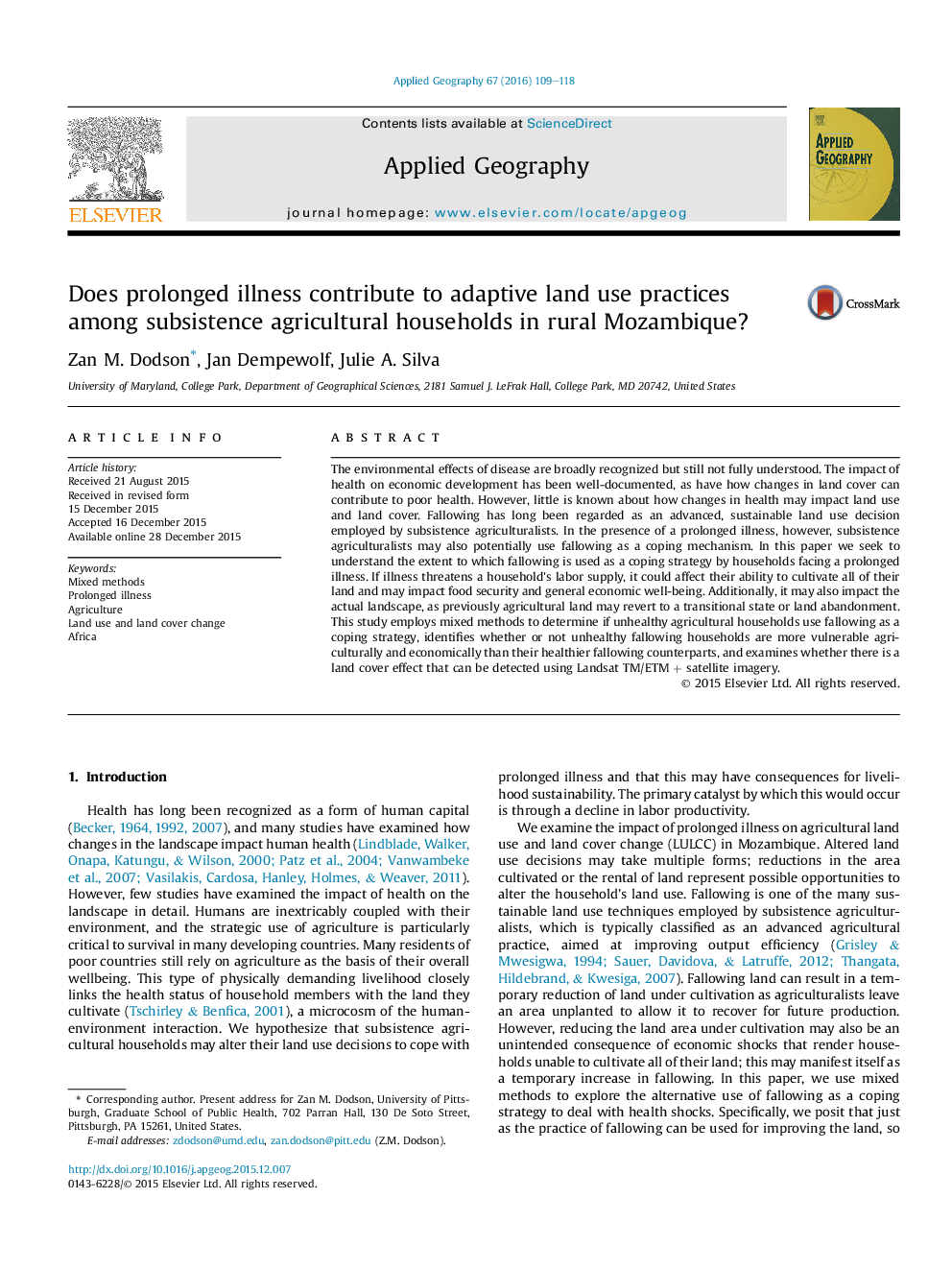| Article ID | Journal | Published Year | Pages | File Type |
|---|---|---|---|---|
| 83213 | Applied Geography | 2016 | 10 Pages |
•Prolonged illness significantly increases the likelihood of fallowing.•Unhealthy households face greater food hardship than healthier households.•Landsat imagery cannot resolve land cover changes due to changes in health status.
The environmental effects of disease are broadly recognized but still not fully understood. The impact of health on economic development has been well-documented, as have how changes in land cover can contribute to poor health. However, little is known about how changes in health may impact land use and land cover. Fallowing has long been regarded as an advanced, sustainable land use decision employed by subsistence agriculturalists. In the presence of a prolonged illness, however, subsistence agriculturalists may also potentially use fallowing as a coping mechanism. In this paper we seek to understand the extent to which fallowing is used as a coping strategy by households facing a prolonged illness. If illness threatens a household's labor supply, it could affect their ability to cultivate all of their land and may impact food security and general economic well-being. Additionally, it may also impact the actual landscape, as previously agricultural land may revert to a transitional state or land abandonment. This study employs mixed methods to determine if unhealthy agricultural households use fallowing as a coping strategy, identifies whether or not unhealthy fallowing households are more vulnerable agriculturally and economically than their healthier fallowing counterparts, and examines whether there is a land cover effect that can be detected using Landsat TM/ETM + satellite imagery.
